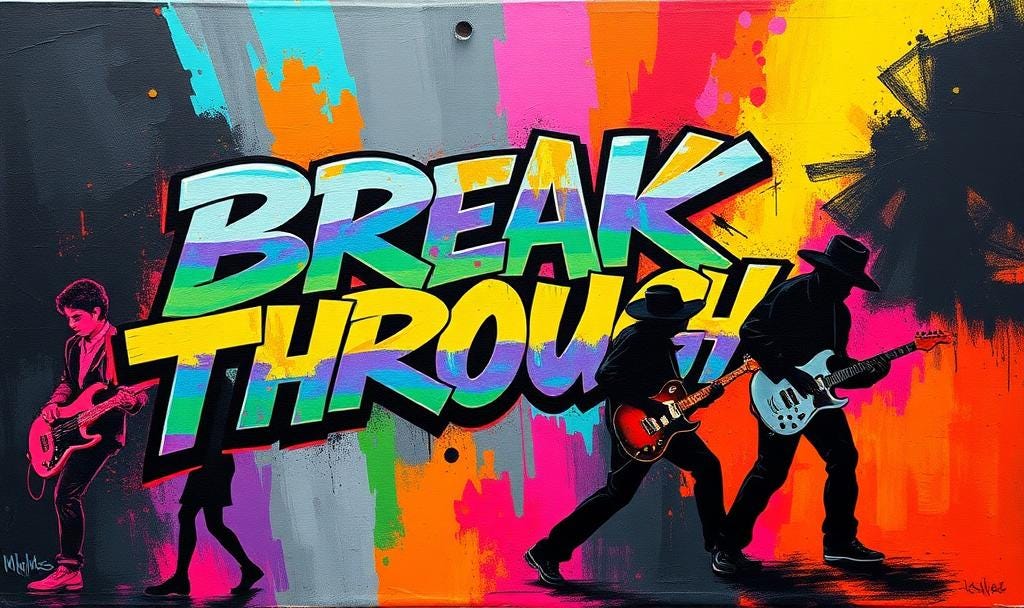The Mainstream Breakthrough: Hip-Hop’s Rise to Mass Appeal
This is part of my Pop Music in the ‘80s series.
By the early 1980s, hip-hop had established itself as a vital cultural force in urban communities, but it had yet to break into the mainstream music industry. That would soon change. The decade saw hip-hop’s transition from a grassroots movement of DJs, MCs, and breakdancers to a commercial powerhouse that reshaped popular music. This shift was driven by key artists, landmark songs, and changing industry dynamics that propelled rap into the spotlight.
The First Steps: Sugarhill Gang and Rap’s Commercial Beginnings
The first major sign that hip-hop could succeed in the commercial arena came in 1979 with the release of “Rapper’s Delight” by the Sugarhill Gang. Though not the first rap recording, it was the first to become a national hit, climbing into the Billboard Top 40. Released by Sylvia Robinson’s Sugar Hill Records, the track introduced rap to audiences beyond New York’s block parties and club scenes. Some hip-hop purists have dismissed the Sugarhill Gang as manufactured, given that they weren’t prominent figures in the Bronx’s burgeoning rap scene. Nevertheless, the song’s success proved that hip-hop had mainstream potential.
Run-D.M.C. and the Birth of the New School
If “Rapper’s Delight” was an introduction, Run-D.M.C. provided the breakthrough. The Hollis, Queens trio Joseph “Run” Simmons, Darryl “D.M.C.” McDaniels, and Jason “Jam Master Jay” Mizell revolutionized hip-hop with their stripped-down, aggressive style. Their self-titled 1984 debut album showcased a harder sound, moving away from the disco-infused beats of earlier rap records. The group’s use of rock elements, particularly on “Rock Box,” set them apart and unknowingly foreshadowed an even bigger crossover yet to come.
That moment arrived in 1986 with Raising Hell, an album that elevated hip-hop to new heights. The album’s standout track, “Walk This Way,” was a collaboration with rock legends Aerosmith. The song was huge for both groups. The song charted #4 on the Hot 100, and was the highest ranking song for either group at the time. Aerosmith would use the momentum from that song to reingite their career, eventually scoring a #1. The music video, which depicted the two groups literally breaking down a wall between genres, was symbolic of hip-hop’s entry into mainstream consciousness.
MTV’s Role in Hip-Hop’s Growth
MTV, which launched in 1981, initially focused almost exclusively on rock, often ignoring Black artists. Michael Jackson’s pop success with the Thriller album, and notably “Billie Jean,” allows CBS to force MTV’s hand and begin showcasing Black artists. Hip-hop soon followed. Run-D.M.C., with the guidance of Rick Rubin, became one of the first rap acts to receive regular MTV airplay, paving the way for others. The network’s embrace of hip-hop expanded in 1988 with the launch of Yo! MTV Raps, a dedicated program that introduced viewers to a wide range of hip-hop artists, from East Coast pioneers to emerging West Coast acts.
Def Jam and the Rise of Hip-Hop Moguls
The formation of Def Jam Recordings by Rick Rubin and Russell Simmons in 1984 marked another turning point. The label played a crucial role in shaping hip-hop’s mainstream appeal by signing acts like LL Cool J, the Beastie Boys, and Public Enemy. LL Cool J’s Radio (1985) demonstrated that hip-hop could sustain a full album rather than rely solely on singles. The Beastie Boys, initially seen as a novelty act, brought rap to a new demographic with Licensed to Ill (1986), the first rap album to top the Billboard charts.
The Lasting Impact
By the late 1980s, hip-hop was quietly becoming a dominant force in American music and pop music globally. The mainstream success of Run-D.M.C., Def Jam’s artists, and MTV’s growing support cemented rap as a permanent fixture in American popular culture. This period set the stage for the diverse, complex hip-hop landscape of the 1990s, where the genre would evolve in multiple directions, from gangsta rap to conscious hip-hop to jazz-influenced sounds.
The mainstream breakthrough of hip-hop in the ‘80s capitalized on the genre’s ability to redefine musical and cultural boundaries. What started as a street-born movement was now commanding global attention, setting the stage for hip-hop’s continued evolution and eventual dominance in the decades to come.





